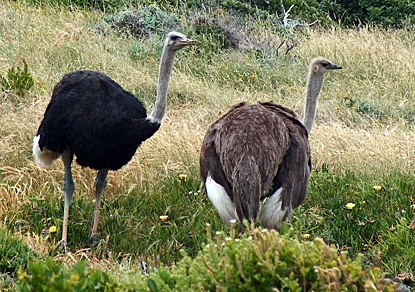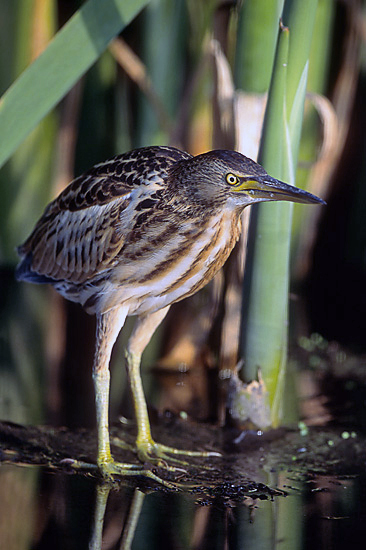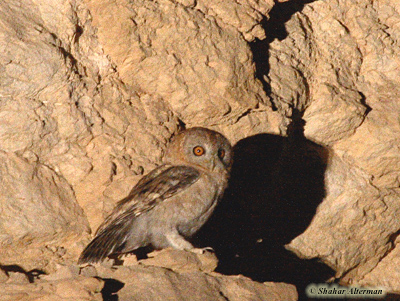This presentation is a three-part article discussing the birds mentioned in the Bible as well as some birds observed during a tour through parts of the Middle East. We trust that no one will be offended, as Christians, Jews, and Muslims accept part or much of the Old Testament. Christians also believe the New Testament. Agnostic or atheistic birders may not be interested in either tome but, considering that the Bible is an established work of literature, they might find the avian subject matter of interest, especially when different interpretations of the same bird are noted. I will quote numerous passages from four different authorities, namely: the King James Version, the New International Version, the Catholic New American Bible, and the Jewish Tanakh Torah. Of interest is a disclaimer from each of them to the effect that, “The precise identification of some of the birds is uncertain.”
Bird or Birds - These words are used 42 times in the Old Testament, 7 times in the New Testament.
Fowl or Fowls - These words are used 74 times in the Old Testament, 11 times in the New Testament.
There are many usages of the generic words “Birds” and “Fowl” even before the birds, themselves, are named: Gen. 1:20-22; 2:20; 6:7, 20; 7:3, 8, 14, 21, 23; 8:17-20.
Turtledove or Turtledoves or Turtle, Pigeon or Pigeons - These terms are used 66 times in the Old Testament, 11 times in the New Testament. All references to ‘Turtle’ in the Bible mean ‘Turtledove,’ not the reptilian tortoise.
The first bird mentioned by name in the Bible is the Raven (Gen. 8:7). Noah sent it forth till the flood waters dried up.
 |
| There are a couple of Raven species in the Middle East – this is the Brown-necked Raven, a common species. |
 |
| This is the common Turtledove, basically a summer resident in Palestine. |
Ex. 16:13 mentions Quail that covered the camp of Israel in the Wilderness of Sin. (Also see Num. 11:31.)
 |
| This is the very common Eurasian Quail. |
 |
| This is the Sand Partridge, probably the most common partridge in the Middle East, somewhat reminiscent of the introduced Chukar into the western US. (Photo by Lior Kislev) |
Job 39:13 The Ostrich was known for its feathers and plumage. It was also known for its habit of laying its eggs and going off without incubating them, letting the sun incubate them (Job 39:13-18). The species used to be more common than now. Even with the prohibition against eating Ostrich meat in the Kosher diet, there are two Ostrich farms in Israel today.
 |
| This is the Common Ostrich of the Middle East and Africa. |
 |
| The common Dead Sea Sparrow. |
 |
The Psalms reference to the house top is thought to be the common Blue Rock Thrush, which typically sings from the flat-roofed house tops in the Middle East.
|
Jer. 8:7
| King James Version | New International Version | Catholic New American Bible | Jewish Tanakh |
|---|---|---|---|
| Stork | Stork | Stork | Stork |
| Turtle (dove) | Dove | Turtledove | Turtledove |
| Crane | Thrush | Thrush | Crane |
| Swallow | Swallow | Swallow | Swallow |
These birds know the appointed times (to migrate). Notice the extreme differences in interpretation from the original Hebrew. White Storks are common in Palestine. Other storks can be found in the Middle East but not particularly in Israel.
 |
| If crane is the correct interpretation, this is the Demoiselle Crane, a common migrant through Palestine. |
 |
| If the bird mentioned is a Thrush, it could be the Fieldfare shown here, fairly common in Israel. |
Also mentioned in Job 39:26 is the Hawk that knows when to fly to the south. There are several hawks that migrate in addition to several that are permanent residents.
Next are some Birds that will inhabit the ruins of Babylon.
Isa. 14:23 mentions the Bitterns that will inhabit the desolate marshy areas.
 |
This is the Little Bittern, the most common bittern in Babylon (Iraq) and the Middle East, similar in appearance and in the same genus as the Least Bittern of the Americas.
|
Zeph. 2:14 mentions bitterns and cormorants that will roost on the lintels or capitals of the ruins of Babylon. The only time a Cormorant would do that would be if a building were on a cliff above the sea, which Babylon wasn’t.
Isaiah 34:11,15; Jeremiah 50:39
| King James Version | New International Version | Catholic New American Bible | Jewish Tanakh |
|---|---|---|---|
| Cormorant | Desert Owl | Desert Owl | Jackdaws |
| Bittern | Screech Owl | Hoot Owl | Owls |
| Owl | Great Owl | Screech Owl | Great Owls |
| Raven | Raven | Raven | Ravens |
| Vultures | Falcons | Kites | Buzzards |
| Owl | Owl | Ostrich | Ostrich |
 |
Although one would not expect to see a cormorant perched on a building, that is the natural place for a Jackdaw. Even nowadays, one can see Jackdaws on practically every building in Jerusalem and other large Middle-eastern cities at least once during a day.
|
 |
Have you ever seen a Bittern roosting on the edge of a building? This is Hume’s Owl, a moderate-sized owl of the desert that would perch on a desolate ruin of a building. (Photo from IsraBirding.com)
|
The King James Micah 1:16 mentions “…baldness as the eagle.” The American Bald Eagle, which, of course, is not bald, does not occur in the Middle East, and all Eurasian eagles’ heads are fully feathered. However, notice that the Jewish version refers to “...as bald as a Vulture.”
 |
The Lappet-faced Vulture of the Middle East and Africa is completely bald. Again, the Hebrew renders a more accurate interpretation.
|
There are a number of specific birds mentioned in the New Testament. Doves, pigeons, and sparrows are mentioned several times in various ways. Besides doves (mostly Turtledoves) being mentioned, Pigeons are also considered as an alternative type of sacrifice to the doves.
In a very pedestrian comment, Jesus says that he would gather the people of Jerusalem as a Hen gathers her Chickens (Matt. 23:37). Chickens have been domesticated from their wild African ancestors for well over 3000 years.
Then there is the prediction of Jesus that Peter will deny him 3 times before the Cock crows. (Mark 14:68-72); and its fulfillment (John 18:27).
One last verse of interest.
The King James version has Jesus saying, “Wherever the carcass is, there will the eagles be gathered together.” But, the more recent versions have ‘vultures gathering around a carcass.’ We know the habit of vultures gathering around a carcass, while eagles are more of a solitary species, even though, at times, they may resort to feasting upon carrion.
 |
Griffon Vulture
|

Very nice article. Interesting to see the birds' photos that match the passages.
ReplyDeleteVery interesting. I never gave this much thought.
ReplyDeleteIntriguing post. I knew nothing about Biblical birds nor birds of the Middle East; thanks for brushing me up on both.
ReplyDeleteVery nice research. We very much appreciate knowing about the different birds mentioned in the Bible. Didn't know there were so many! Looking forward to Part II:)
ReplyDeleteI'm a devout atheist and I'm certainly not offended and can't see how anyone would be. I thoroughly enjoyed this post and expect to do the same with the future installments. Very interesting.
ReplyDeleteThis is a lot of fun. Great read with beautiful pics!
ReplyDeleteVery interesting, thanks, Steve! Two minor corrections: I believe the photo labelled "Jackdaw" actually shows an (Indian) House Crow. These do occur in the Middle East but were probably introduced there since the time the Bible was written. Two traits that indicate House Crow and rule out Jackdaw are the dark eye (pale in Jackdaw) and the large bill (small in Jackdaw). Second, I believe the origin of domestic chickens is Asian junglefowl, not African. This blog post is an excellent summary of the recent literature in the topic: http://scienceblogs.com/gregladen/2008/02/the_origin_of_the_chicken.php
ReplyDeleteVery interesting article. I can only imagine the difficulties of trying to identify the species of birds mentioned in the Bible, as I'm sure changes in habitat range, etc. have occurred. Still it's great to see photos of the possibilities, in particular the Demoiselle Crane. Thanks, and I'm looking forward to the next post.
ReplyDeleteNice post! I've always thought the instruction to "consider the birds of the air" a very wise one! Because I, too, am a pedant and used to live in Lebanon I'd vote for the common partridge actually being a chukar - definitely the most common in the hills and mountains, and I think the race of blue rock thrush you have there is one of the far eastern ones,not the all blue med race. As you say there are lots of other options - common crane and little owl, or even eagle owl are all rather more common than the alternatives, but who knows! [It is a jackdaw photo though, not a house crow - the white eye is one give away]
ReplyDeleteSafari Ecology Blog